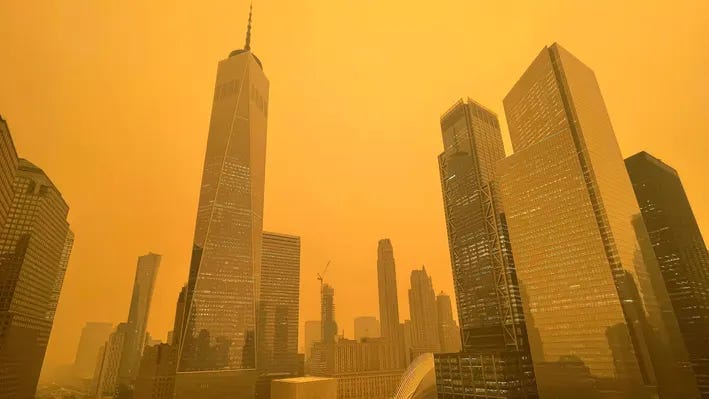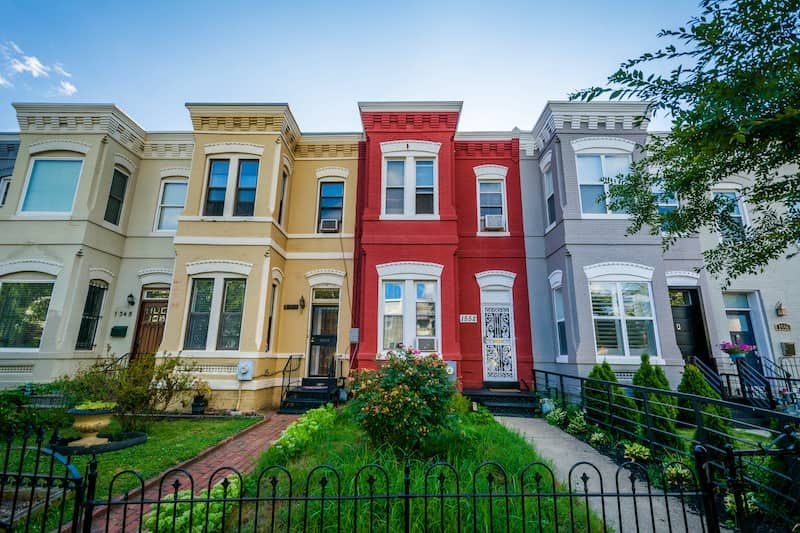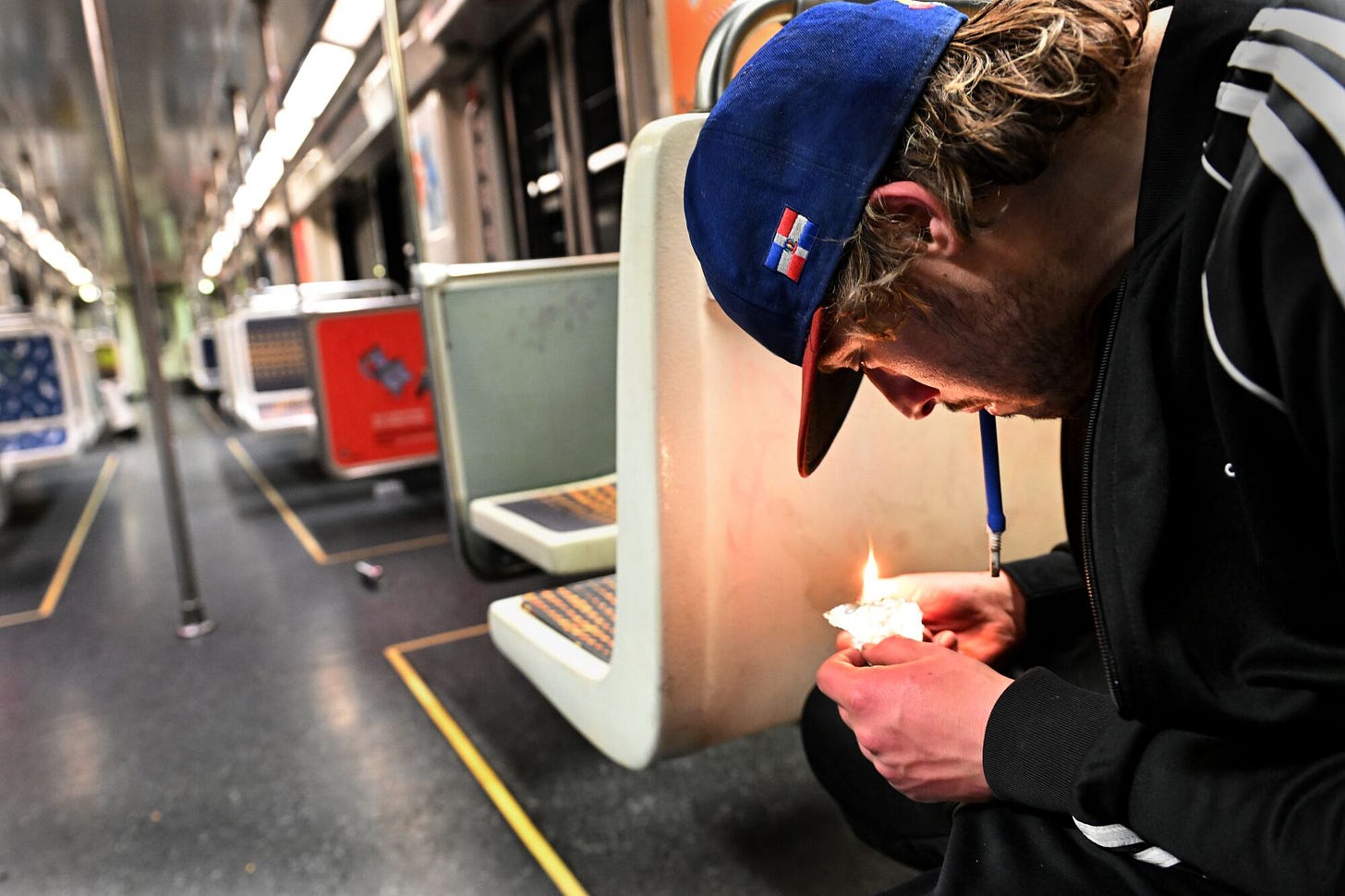Welcome to The New Urban Order — where urbanists explore the future of cities. This work is made possible by subscribers. If you find this newsletter useful, please subscribe and if you’ve been enjoying the content for a while, please upgrade to support this work!
The week that Apple first announced its new “mixed reality headset,” Vision Pro, much of the northeast was shrouded in wildfire smoke. We are living in an environmentally degraded world, and as we all know, it’s only getting worse from here on out. I’d always assumed that at some point, when things got really bad, we’d one day muster the leadership to address climate change. But seeing those goggles, it dawned on me: We’re just going to tune it out, aren’t we?
It once seemed too ridiculous that people would sit around in goggles in a virtual reality world, but the average teenage American already spends more than 8 hours per day looking at a screen. As we can see with Vision Pro, Meta Quest, and Google Glasses, the big tech companies dream of doubling that figure to encompass just about all of a human’s waking hours. While Vision Pro and Meta Quest are being marketed as pathways to pleasure or enhanced productivity, they’ll likely just become compulsions, then tools of survival, like the smart phones before them.
With the potential for climate change to make the outdoors more frequently uninhabitable, whether due to extreme heat, wildfire pollution, flooding, or even the potential for climate-related unrest, we will turn to screens to cope, much as we did during the pandemic. We may not be ready for goggles in 2023, but in the 2030s when the sky is orange for weeks rather than days at a time, you can start to see how goggles might be useful.
This sounds very cynical and apocalyptic, but online life has a bi-directional relationship — both a symptom and cause — with many aspects of American life. For example, as people buy more of their goods and services online, there is less quality, practical, local retail in our cities. Nowadays, for an increasing number of Americans, there can often be no other way to get food, clothes, or other basic goods aside from online delivery from Amazon and the like. The more we go online, the less we can expect our physical reality to remain viable.
We can blame tech companies for their smooth marketing and their addictive products that keep us from engaging in the real world, but we should also question what role we city-builders play in creating a built environment that is less accessible, compelling, and safe than goggles on a couch.
Many of the places that have vibrant retail, safe streets, recreation amenities, and cultural venues are very expensive to live in. And far too many of America’s better urban public spaces, cultural venues, parks, and commercial corridors are inconvenient to access and hostile to minors — no wonder the allure of TikTok and streaming platforms.
It is no coincidence that remote work is flourishing in the United States while Europe’s offices are between 70-90 percent full and some of Asia’s offices have higher occupancy rates than before the pandemic. The difference? In many European and Asian cities, commutes are shorter and more likely to take place on foot, bike, or public transit; free public daycare/school is a high quality source of education and childcare; and working more than 48 hours per week is frowned upon, if not actually illegal. In-person life is prioritized there, while here the good, in-person life feels increasingly out of reach for many Americans.
Many of us are aware of the perils of too much screen time, such as anxiety, depression, and loneliness. We were not surprised by the recent U.S. Surgeon General’s warning about young people’s mental health crisis, noting social media as a major factor. Frances Haugen’s 2021 testimony about Meta’s purposefully toxic algorithms just affirmed what we’ve observed anecdotally: online life is making us sick.
But the problem is also that online life further atomizes social capital and has the potential to break down our cities. This was most apparent during COVID-era school lockdowns: affluent parents were able to hire tutors for pods, or to oversee online schooling, while less privileged kids managed (or didn’t) on their own. Violence rates in major cities skyrocketed, as did other antisocial behaviors.
We have for so long made the case that good urban planning — abundant public transit, affordable housing, and social infrastructure — is good for the economy and environment. Now is the time to connect planning’s importance to retaining humanity. Just like cities have developed plans to ensure that people are within a 10-minute walk of a park, we should be ensuring that people are within a 10-minute walk of the retail and social amenities needed to have at least a semi in-person life. This might look quite similar to the 15-minute city, but the focus here is on creating accessible reality.
Otherwise we risk a new type of digital divide: between those who can and cannot choose how much of their life is lived online. Increasingly in America, land of the free, it seems like we no longer have that choice.








